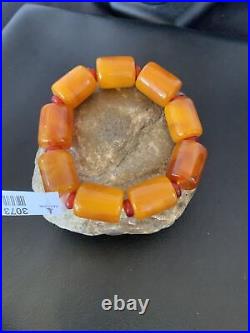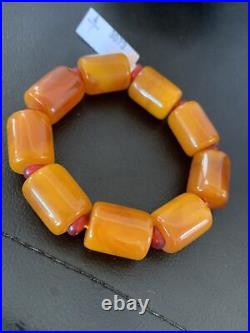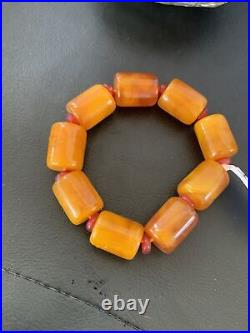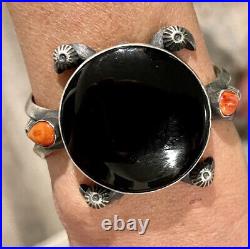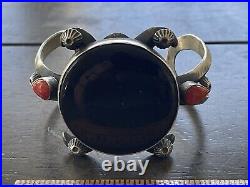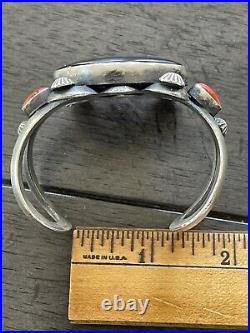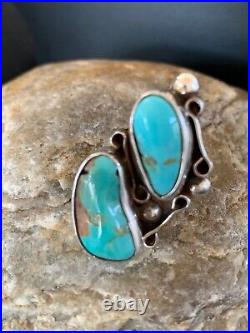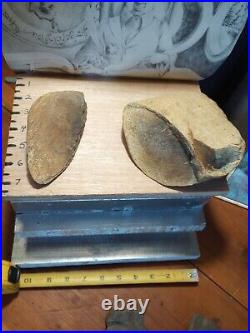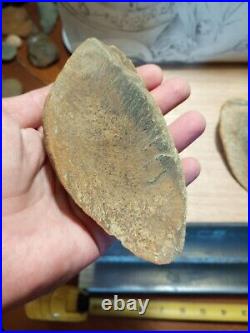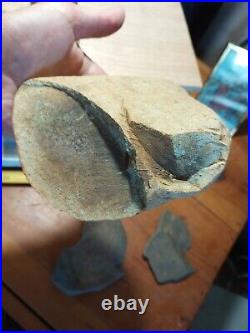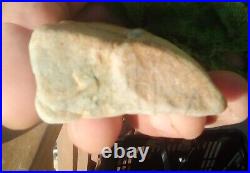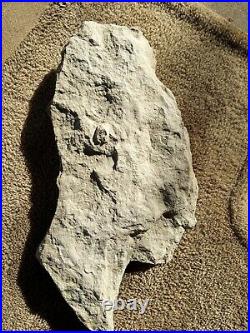








Ancient Art, Antiques, & Fine Collectibles. Native American 3 Biscuit Discoidal. Game Disk Stone from Tennessee with Petroglyphs. This ancient Native American stone game disc is called a Double Cupped Discoidal and it is one of the rarest types of game discs. This one is made from carefully worked course-grained hardstone and shows appropriate ancient wear and mineralization. It measures approximately 3″ in diameter x 1.45″ tall and weighs a hefty 12.1 oz. This discoidal has a great, authentic patina and shows a good mineralization. It must have been a “Lucky Discoidal” for its ancient owners, as it shows wear (especially on two, flattened sides) from being thrown on the ground thousands of times to wear down this hard granite example. Lucky Discoidals were prized possessions and would be passed down within a particular tribe from generation to generation. This particular game stone has several petroglyphs that were incised into the hardstone discoidal by its previous owners hundreds of years ago. The images are very small and are obscured by authentic mineralization, but one can see men, animals (that were perhaps used to bet with), and the distinctive arrow that is found on game stones. Discoidals, sometimes called game discs, were treasured tribal possessions throughout the Mississippian world of early Native American cultures. They have been found across all of the great Mississippian lands from eastern Oklahoma, Missouri, Arkansas, Illinois, Indiana, Tennessee, Kentucky, Alabama, Georgia, Louisiana, and Mississippi. Although styles often varied from region to region, they were all used as game stones. The most frequently encountered Mississippian discoidal styles are the: Tennessee double and single cup, Cahokia, Salt River, Biscuit, Circle Roller, Apple, and Barrel styles. Brief History of Stone Discoidals & the Game ” Chunkey “. One of the most interesting Mississippian artifacts from early Native Americans is the discoidal or stone disc. What is a discoidal? The easiest answer is that a discoidal is a round Mississippian game piece made of hard stone that was used in the ancient Native American game known as chungke or chunkey or chunkee. Players and whole tribes would bet on this game of chance and skill. No description of discoidals would be complete without some description of the game itself. In 1775, James Adair in his 18th Century English wrote a description of the game. The language in old English may seem rather difficult to follow in places, but the message seems clear enough. The warriors have another favorite game called’chungke,’ which, with propriety of language, may be called’running hard labor’. They have near their state-house a square piece of ground well cleaned, and fine sand is carefully strewed over it, when requisite, to promote a swifter motion to what they throw along the surface. Only one or two on a side play at this ancient game. They have a stone about two fingers broad at the edge, and two spans round; each party has a pole of about eight feet long, smooth and tapering at each end, the points flat. They set off abreast of each other at six yards from the end of the play-ground; then one of them hurls the stone on its edge, in as direct a line as he can, a considerable distance toward the middle of the other end of the square; when they have run a few yards, each darts his pole anointed with bear’s oil, with a proper force, as near as he can guess in proportion to the motion of the stone, that the end may lie close to the stone; when this is the case, the person counts two of the game, and, in proportion to the nearness of the poles to the mark, one is counted, unless by measuring both are found to at an equal distance from the stone. In this manner, the players will keep running most part of the day, at half speed, under the violent heat of the sun, staking their silver ornaments, their nose, finger, and ear rings; their breast, arm and wrist-plates; and even all their wearing apparel, except that which barely covers their middle. All the American Indians are much addicted to this game, which it seems to be of early origin, when their forefathers used diversions as simple as their manners. The hurling-stones they use at present were, time immemorial, rubbed smooth on the rocks, and with prodigious labour; they are kept with the strictest religious care, from one generation to another, and are exempted from being buried with the dead. They belong to the town where they are used, and are carefully preserved. Discoidals began appearing at late Woodland Sites in eastern Missouri and southern Illinois around 700 AD. By Mississippian times, chunkey’s popularity spread throughout the Mississippian world. Some Mississippian sites have produced more than one discoidal style, while others have produced only a single style. Many surviving discoidals are both beautiful and durable. Quartz and granite were often used in the making of these popular game stones. Both materials are extremely hard, and they had to be. Discoidals were continuously used in sporting contests over generations, so they had to be durable. A very few discoidals are made from colorful flint, but flint can chip and easily break if it contacts another hard stone. Discoidals are very popular today with collectors because they come in many styles and colorful materials. Many are so finely made that today they are seen as works of art. All photos taken indoors and the ruler and stand is not part of the sale, just there so you can better judge the size. Each object I sell is professionally researched and compared with similar objects in the collections of the finest museums in the world. When in doubt, I have worked with dozens of subject matter experts to determine the condition and authenticity of numerous antiquities and antiques. All sales are Final, unless I have seriously misrepresented this item. Please look at the 4x macro photos carefully as they are part of the description. Member of the Authentic Artifact Collectors Association (AACA) & the Archaeological Institute of America (AIA). This item is in the category “Collectibles\Cultures & Ethnicities\Native American: US\Pre-1600\Artifacts”. The seller is “houghton-usa” and is located in this country: US. This item can be shipped to United States, Canada.
- Handmade: Yes
- Modified Item: No
- Country/Region of Manufacture: United States
- Country of Manufacture: United States
- Culture: Native American: US
- Artisan: unknown
- Provenance: Ownership History Available
- Origin: Tennessee
- Tribal Affiliation: Mississippian


